Content Marketing – The Buyer’s Journey, Lead Nurturing and Beyond
The Buyer’s Journey, Lead Nurturing and Beyond

Content marketing is the process of producing valuable content that educates and informs. The material can be produced in many different formats, including blog posts, videos, eBooks, webinars or white papers – to name just a few.
The key is to enlighten and explain a subject of interest to your prospect that’s also an area of expertise for you and your organization – without overtly promoting your firm. It’s a ‘fine line’ to walk. But if done successfully, the results can be impressive.
Content marketing can also strengthen your firm’s brand. By providing educational content, you help prospective clients better understand your value proposition, and begin to fully appreciate your expertise. And if done properly, content marketing will help prospects better envision what it’s going to be like working with your firm.
As if that wasn’t enough, search engines love content. Producing content helps improves your chances of being found in search results pages, like Google – enhancing your visibility amongst prospective clients.
The Buyer’s Journey
When implementing a content marketing strategy, it’s helpful to start with a framework. The following graphic provides an overview of a framework Outsource Marketing has implemented on behalf of clients. It’s a widely used framework used by many content marketing agencies.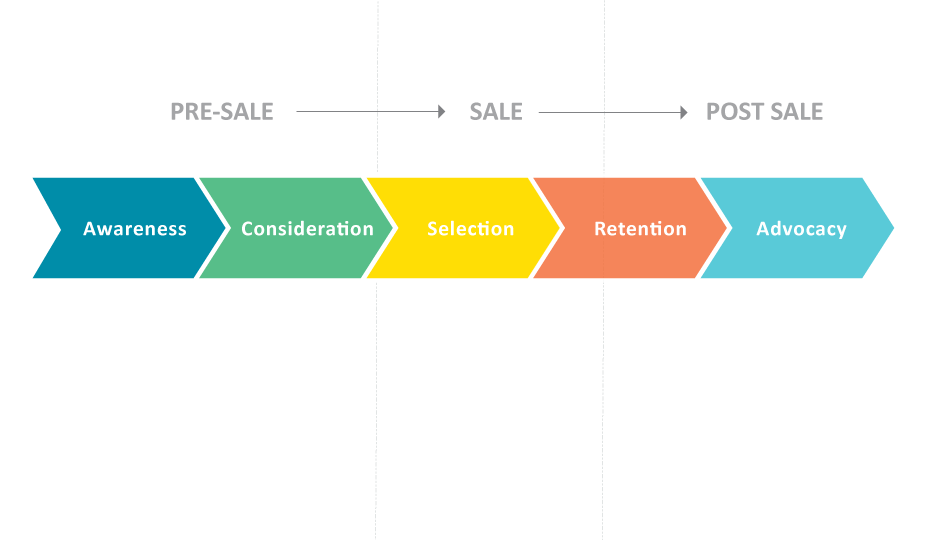 Though depicted as such, the buyer’s journey is rarely linear. It often entails multiple interactions, or ‘touches’ within each stage. Content marketing’s goal is to maintain your firm’s visibility at each stage of the buyer’s journey – from awareness and consideration through to selection.
Though depicted as such, the buyer’s journey is rarely linear. It often entails multiple interactions, or ‘touches’ within each stage. Content marketing’s goal is to maintain your firm’s visibility at each stage of the buyer’s journey – from awareness and consideration through to selection.
But it shouldn’t stop there.
An effective content marketing strategy should also help retain existing customers and encourage them to be advocates of your firm. Modern marketing, particularly for business to business companies, requires a comprehensive content marketing program. Content marketing, however, is just one part of a comprehensive, integrated marketing strategy.
Think of it this way.
The goal of traditional marketing, like direct mail or print advertising, is to interrupt. The advertiser wants to distract you from whatever you are doing just long enough for you to hear what they have to say.
In today’s vernacular, it’s called Outbound Marketing. Inbound Marketing is different. Its goal is to provide highly relevant material to a potential customer or strategic business partner based upon their specific actions or behaviour. It’s designed to be ‘found’ by someone looking for information or answers to specific questions or concerns. It’s not overtly promotional. And it’s designed to educate and inform.
Stage 1- Awareness
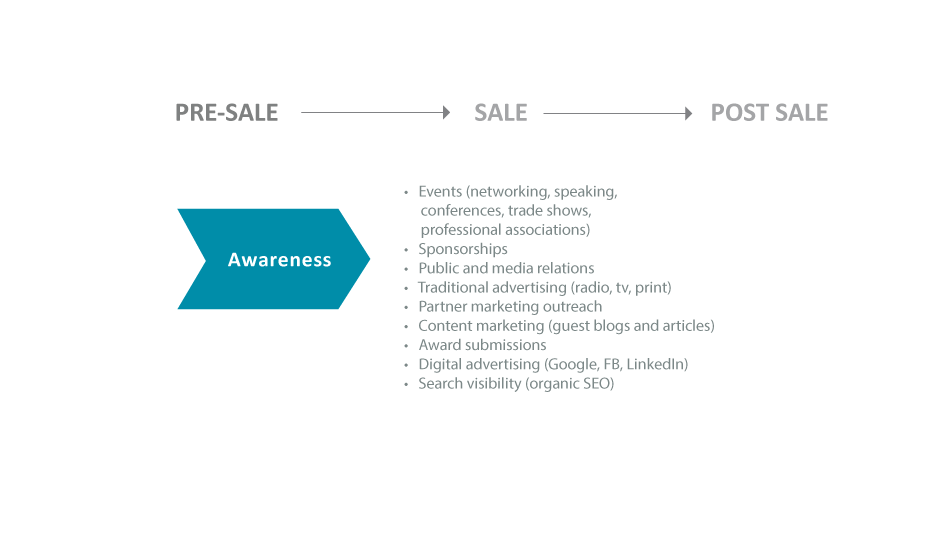 In stage one, awareness, potential clients are searching for information to solve a problem. They are looking for answers. But before you get the opportunity to demonstrate that your firm has the information and expertise a prospect needs, you need to be visible. You need to be ‘found.’ Improved visibility can be achieved by implementing a variety of tactics as depicted in the above graphic. It is not necessary to implement all these tactics – only those that will have the greatest impact, and with the least incremental cost, to your firm.
In stage one, awareness, potential clients are searching for information to solve a problem. They are looking for answers. But before you get the opportunity to demonstrate that your firm has the information and expertise a prospect needs, you need to be visible. You need to be ‘found.’ Improved visibility can be achieved by implementing a variety of tactics as depicted in the above graphic. It is not necessary to implement all these tactics – only those that will have the greatest impact, and with the least incremental cost, to your firm.
In addition to being visible, everything that’s communicated through your content marketing efforts, from stage one onwards, should reinforce the characteristics of value, trust and likability. Value, trust and likeability is a powerful lens to assess the effectiveness of your professional services marketing and business development efforts. To begin, your content marketing must demonstrate value – that your firm is uniquely qualified to address the client’s problems.
Are you telling the prospect how you are going to solve their problems and make their life better? Then, we must cultivate trust by showing prospective clients how you think and solve problems. Are you helping the prospect better understand how you do what you do? And that you can deliver the same results for them as you’ve done for others – that you’ve got a system or ‘playbook.’ Providing case stories or client success stories on your website is an excellent way to build trust.
Last, but not least, is likeability. Many B2B services are delivered over months, years, or even decades. It often involves a close working relationship between firm and client. The importance of being a firm that is easy and enjoyable to work with should not be overlooked. Are you giving the prospect a chance to get to know you a bit bitter, and get a feeling for what it would be like to work together? Sharing what’s special about your firm’s culture, and what your employees are like to work with, will go a long way to helping a prospective client envision what it would be like to work with you.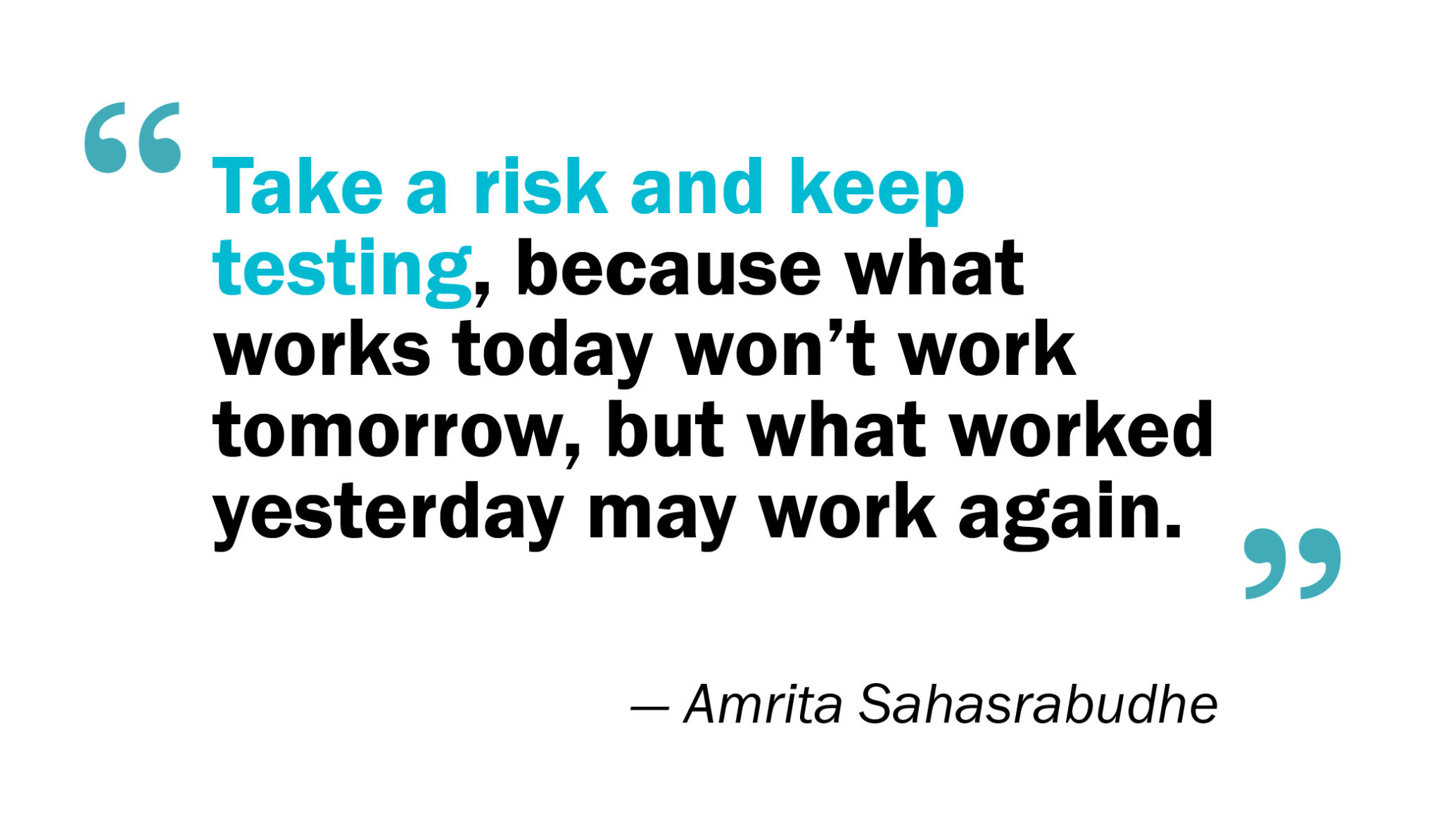
Stage 2 – Consideration
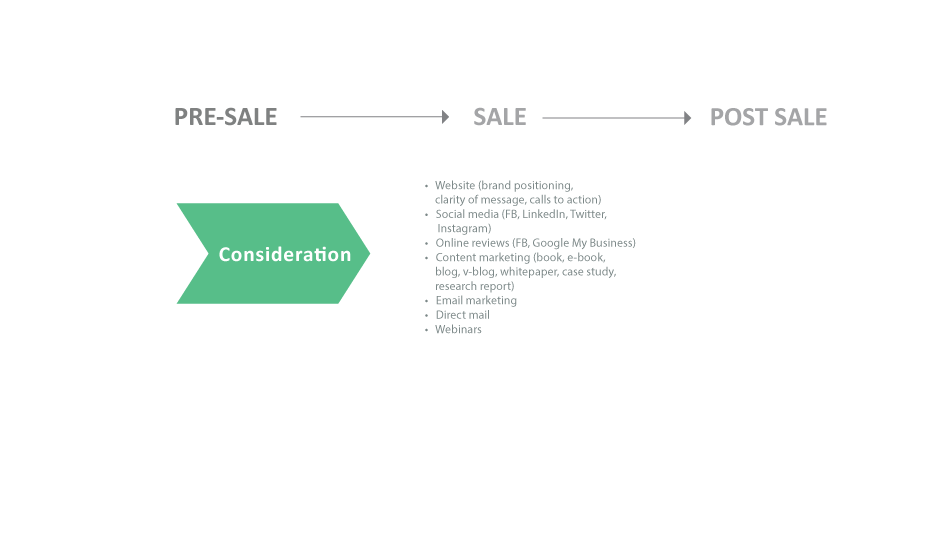 The second stage of the buyer’s journey requires us to build engagement with the prospect. We do this by providing content of significant value, positioning your firm as a thought leader, and gaining permission to continue to communicate to the prospect through various mediums, including email marketing. In stage two we want to educate prospects by building trust through the sharing of ‘stock content.’
The second stage of the buyer’s journey requires us to build engagement with the prospect. We do this by providing content of significant value, positioning your firm as a thought leader, and gaining permission to continue to communicate to the prospect through various mediums, including email marketing. In stage two we want to educate prospects by building trust through the sharing of ‘stock content.’
This is content that is both long-lasting and of significant value to the prospect. Examples of stock content include white papers, research studies, eBooks and guides. The above graphic lists the various tactics that can be deployed as part of the second stage of the buyer’s journey, moving them closer to becoming clients. This comprehensive list shows what kind of tactics are possible. Before we move on to stage three of the buyer’s journey, we should briefly mention the role of social media in the buyer’s journey.
Great content will not magically find readers. It’s imperative that content is promoted and shared through all channels possible – particularly social media. Not only does social media help promote content, but it also facilitates online networking and contributes to SEO. It’s also is a key weapon in the battle for talent. Social media will help recruit new talent to your organization – a key strategic priority for many organizations today.
Stage 3 – Selection
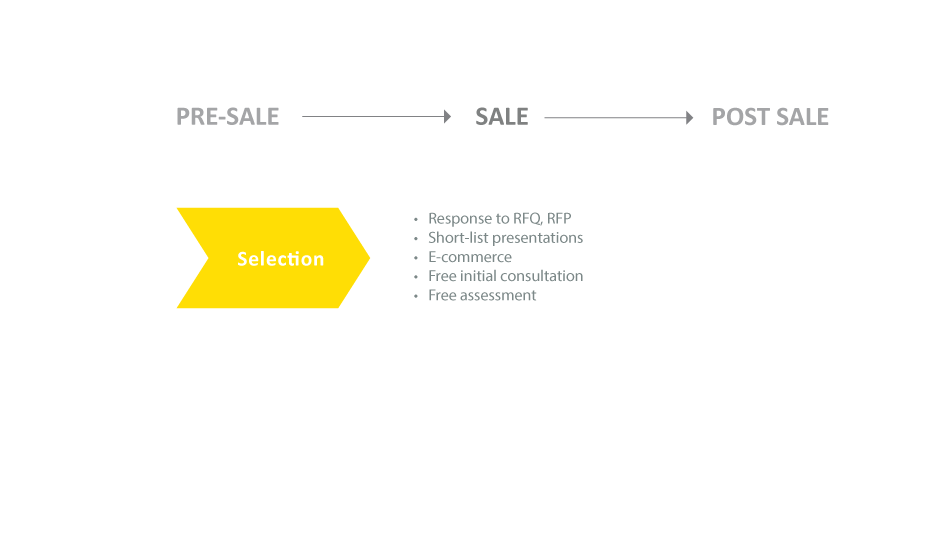 The third phase, selection (a.k.a purchase), is where all your previous efforts bear fruit. The above graphic lists the various tactics that can be deployed as part of the third stage of the buyer’s journey.
The third phase, selection (a.k.a purchase), is where all your previous efforts bear fruit. The above graphic lists the various tactics that can be deployed as part of the third stage of the buyer’s journey.
Free initial consultation and assessments provide prospective clients with a low-risk, no-cost opportunity to interact directly with your firm and determine the suitability of your service offering. And personal interactions like short-list presentations confirm that you have the solution to a client’s problem.
Stage 4 – Retention and Repeat Purchase
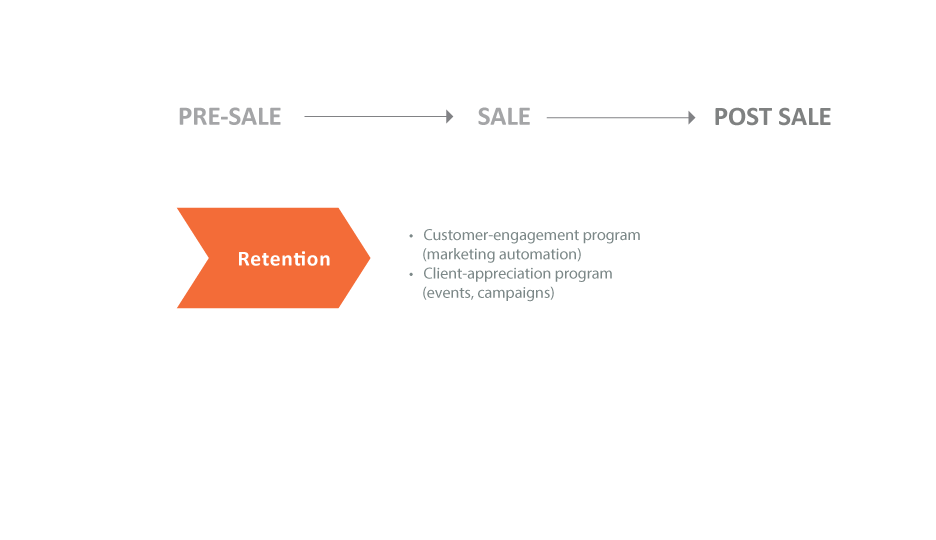 Nothing is more important to client retention and securing future work from an existing client than doing an exceptional job delivering the current engagement. However, that does not mean there isn’t a role for a few strategic marketing initiatives.
Nothing is more important to client retention and securing future work from an existing client than doing an exceptional job delivering the current engagement. However, that does not mean there isn’t a role for a few strategic marketing initiatives.
It’s true that most marketers don’t traditionally see a role for content marketing beyond the selection or purchase phase. I see things a bit differently.
If your content has created value for prospects and helped them commit to your organization, why not keep the party going by using that same strategy to retain them as customers, and encourage referrals? Implementing a customer-engagement program with high-quality content that helps you re-engage with clients during the months and years after the successful completion of a project can be an exceptionally powerful way to stay ‘top of mind’ with the client.
And be sure you are one of the first firms to be considered when a new project or assignment comes along. This type of program usually involves lower-cost marketing initiatives that do not necessitate direct face-to-face contact. Annual holiday greeting cards, celebrating specific milestones of a project once completed and sponsoring projects of importance to the client are examples of customer engagement initiatives.
These initiatives are a bit beyond the scope of what’s considered content marketing or outbound marketing, but they share some of the same principles – engendering goodwill and instilling trust by offering something of value with no strings attached. A client-appreciation program, on the other hand, usually involves more time and resources and necessitates face-to-face interactions between the firm and the client organization. Holding an annual open house, client-appreciate event, or an industry-wide event to explore a topic of interest are examples of client-appreciation initiatives. The above graphic lists the various tactics that can be deployed as part of the fourth stage of the buyer’s journey.
Stage 5 – Advocacy
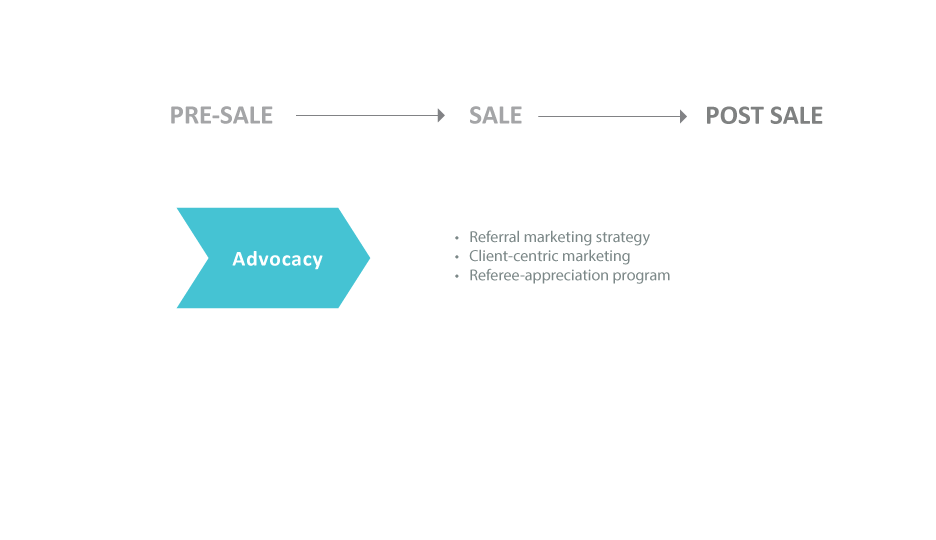 Developing an advocacy program, one that encourages others to promote your firm and refer new business your way is one of the most important strategies high-growth B2B services firms can implement. Once again, a bit outside the scope of content marketing, but I’ve included it here for completeness as advocacy is a very important part of the buyers’ journey often neglected by B2B firms.
Developing an advocacy program, one that encourages others to promote your firm and refer new business your way is one of the most important strategies high-growth B2B services firms can implement. Once again, a bit outside the scope of content marketing, but I’ve included it here for completeness as advocacy is a very important part of the buyers’ journey often neglected by B2B firms.
The above graphic lists a few initiatives that can be deployed as part of the last stage of the buyer’s journey – advocacy. Implementing a referral marketing strategy will be tackled in a future blog post. Client-centric marketing is a strategy whereby your firm’s marketing material features client projects, and you include them directly in their development.
By featuring a client – their project, people and perspective – you engender goodwill and increase the likelihood that they will feature the piece within their marketing. Finally, a referee-appreciation program is a structured system to ensure that those you count on regularly to speak positively about your firm feel appreciated and continue to provide your firm with not just good, but exceptional, reviews.
The Challenge of Content Marketing
Content marketing isn’t easy. It requires the frequent generation of educational content that your target audience will find interesting and engaging—that’s a tall order. Many firms struggle to get into the swing of continuous production.
It’s one thing to identify the issues and topics for content, but it’s another thing to create content that is appropriate to the various method of ‘consumption’ (video, blog, webinars, etc.). Once that content is created, it still needs to be pitched and promoted to extend its reach far beyond your website (social media, organic search engine optimization, paid PPC advertising, etc.).
It’s also important to remember the distinction between ‘marketing content’ and ‘content marketing.’ Marketing content serves the purpose of selling and promoting the firm overtly. B2B content marketing requires a complete shift in mindset and execution. Since the purpose is to discuss topics of interest to your target audience, your content should be externally focused and almost never talk overtly about what your firm does.